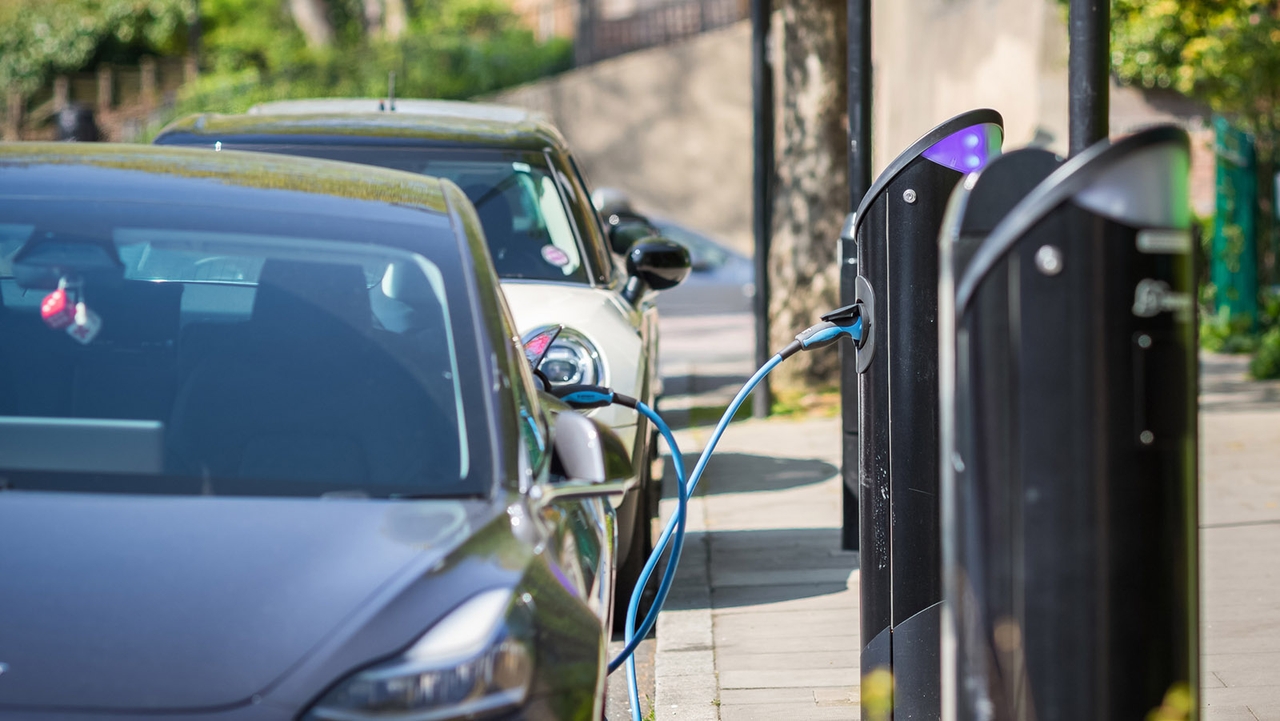Electric cars aren’t as complex as fuel-powered models but they still need regular servicing to keep them running smoothly – here’s everything you need to know
Electric cars can save you a decent chunk on your running costs compared to a fuel-powered car, but those savings don’t just come from cheap charging rates. Another way they’re kind to your wallet is by saving you money on your maintenance costs.
If you have questions about EV maintenance and servicing, our guide is here to answer them. Keep reading to learn how to keep your plug-in in tip-top condition.
Do electric cars need servicing?

You might’ve heard word that electric cars don’t need servicing. In reality, while they don’t have fuel-powered engines, EVs do still need regular maintenance to make sure they’re running properly and are still safe to be used on the road.
The reason some believe this old wives’ tale is because an fuel-powered engine can contain more than a thousand moving parts – all of which are a potential point of failure. In contrast, the electric motor drive units found in EVs usually contain only a small handful of moving parts and are generally much more simple with no clutch or multi-speed gearbox to worry about.
Nevertheless, there are more parts on an EV than just those associated with the electric motor, and regular maintenance is needed to make sure they’re all working as intended. What’s more, servicing is also an opportunity for a trained technician to double-check your car is safe and catch any potentially dangerous faults before they get worse.
How often do they need servicing?

Servicing isn’t just an opportunity to replace parts that have worn out, but is also a way to check that safety critical parts are still working as intended. With that in mind, most EVs still need an annual service to make sure they’re in full working order.
You can easily check your servicing schedule in your car’s handbook, or your car may tell you with a note in the infotainment system or on your dashboard. The majority of manufacturers will specify that their cars should be seen once every 12 months or once a certain mileage figure is reached – whichever comes first.
Be aware, however, that a handful of EV models such as the Volkswagen ID.3 and BMW i3 have now moved to 24-month service intervals. Make sure you check your car manufacturer’s specified servicing schedule and stick to it to keep your EV running for as long as possible.
Where should you service your electric car?

Servicing your EV is just like any other car – you take it to a service centre of your choice and they’ll take care of the rest. The only complication is the centre will need to have staff trained to be able to deal with the high-voltage components in an EV.
In practice, this usually means taking your EV to an approved manufacturer service centre, where they’ll usually have staff on hand specifically trained to deal with your make and model. This means you get the added resale benefit of a manufacturer’s service history, along with the confidence that they’ll use original manufacturer parts and approved processes to maintain your electric car.
That said, manufacturer servicing can be a little more expensive than taking your car to an independent garage. If you have a local non-manufacturer service centre you’d prefer to take your car to, you can check ahead to see whether they have the training and equipment to service your EV. As electric cars become more common, more and more garages are investing in adding EV maintenance to their services.
Electric car servicing – what does it cover?

As we’ve covered, EVs don’t have engines and their electric motors are far more simple, but there are still plenty of parts on an EV that can wear out over time and will need servicing or replacing. The two most obvious safety-critical parts that are shared between EVs and fuel-powered cars are tyres and brakes.
Tyres are the only thing sticking your car to the ground so it’s vitally important they’re undamaged, have plenty of tread left and are correctly inflated. A service will reveal any hidden tyre problems and give you the opportunity to correct them before they get any worse. EVs tend to be quite heavy, too, so can go through tyres a little quicker than an equivalent fuel-powered car.
Brakes, too, are critically important, especially in an emergency. You need to know that you’re going to get good braking force when you mash the pedal down. A service will check that your pads and discs still have life left, along with taking a look at the brake lines that carry brake fluid to and from the callipers – if these lines are damaged or corrode, it could lead to a dangerous reduction in your car’s braking power.
Beyond tyres and brakes, an EV service will check mechanical items such as the joints and driveshafts that connect your wheels to the car, your steering system, and components in your suspension system, to make sure they’re all in good condition. In addition, EV-specific components such as the coolant system that flows between the battery, motor and inverter units, and all the associated electrical connections, will be checked for faults.
Electric car maintenance costs

Beyond the electric motor, battery pack and high-voltage components, EVs tend to use mostly the same parts as their fuel-powered siblings. In general, the costs of buying and replacing these parts are more-or-less the same as they would be for non-EVs. As a result, we don’t expect EV maintenance costs to differ substantially from those for fuel-powered cars.
Is it expensive to maintain an electric car?
There isn’t a definitive answer on whether a typical EV is more or less expensive to maintain than a typical fuel-powered car. Usually, maintenance costs for both car types are more closely tied to the specific manufacturer, with premium and luxury brands charging more for parts and servicing, while mass-market and budget brands will be more affordable.
That said, we generally expect servicing costs for an EV to be slightly lower over time compared with an equivalent fuel-powered car from the same brand. This is because there are generally fewer points of failure on an EV, whereas there are potentially thousands of parts on a fuel-powered car that could wear out and cause a problem.
What about the cost of EV battery replacement?
The only caveat with EV maintenance costs is the battery pack. Anyone who’s owned a smartphone that’s more than a few years old will be familiar with the way lithium-ion batteries lose capacity over time. The same process happens to an EV’s battery and, as it covers more cycles of charging and discharging, its capacity will slowly degrade leaving you with progressively less range over time.
It’s worth pointing out that, compared to a smartphone, EVs do a lot more to keep their batteries in tip-top condition for longer. Firstly, EVs usually use an advanced liquid-based coolant system to keep their battery packs in a happy operating temperature, reducing wear while charging or driving. In addition, EVs include a digital battery management system that protects the battery from being overcharged, and makes sure incoming charge is evenly shared throughout the EV’s battery pack. Both of these strategies extend the working life of an EV’s battery.
While car manufacturers tend to offer an industry-standard three-year mechanical warranty on their vehicles, pretty much all EV makers will specifically guarantee their high-voltage batteries for between seven and eight years. This means you can buy a used EV with the peace of mind that you’re covered if your battery starts to degrade ahead of schedule.
You can also prolong the life of your EV’s battery pack by trying to keep its state of charge between 20% and 80% for day-to-day use. Ideally, you’ll only fully charging the battery or drive the EV until it’s nearly flat when going on occasional road trips, where you know you’ll need as much range as possible. Most EVs include a setting in their infotainment system to allow you to set your preferred maximum and minimum charge state.
Replacing a worn-out EV battery is expensive. Smaller battery packs can cost upwards of £6,000 to replace, whereas a larger long-range battery pack replacement can easily stretch above £10,000. However, if you’ve properly cared for your EV, you shouldn’t have to face this possibility for a long time. However, a small silver lining here is that EV battery packs are more than 95% recyclable, so swapping packs shouldn’t cause much environmental damage.
Ready to make the switch to electric?
Take a look at Motorpoint’s range of nearly new electric cars, all of which have plenty of warranty left on their battery packs. For more EV advice, check out our guide to the EV jargon you’re likely to encounter if you’re in the market. For buying options, browse our picks for the best cheap electric cars on sale.



































